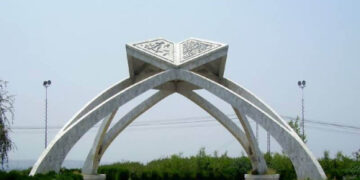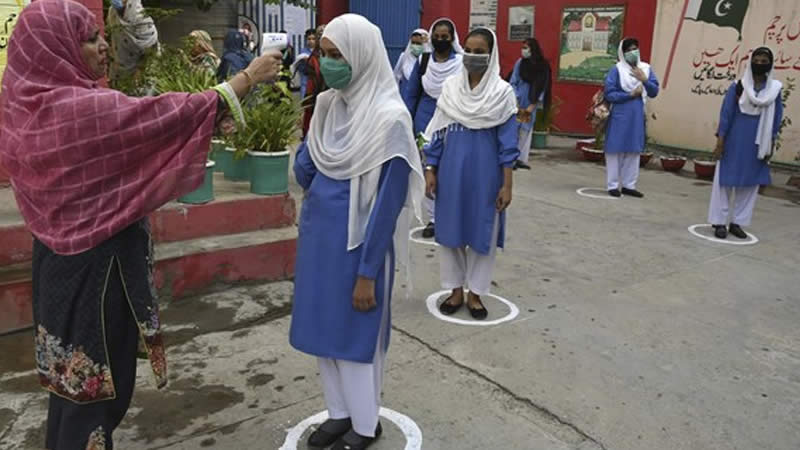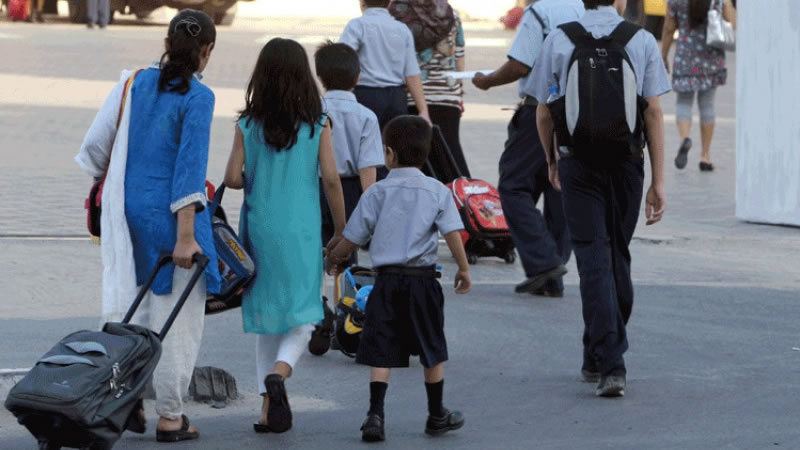 It’s the sole New York school reachable only by ferry, a short ride from the lower tip of Manhattan to Governors Island, a 70-hectare former military base where birds and trees greatly outnumber human visitors. The Urban Assembly New York Harbor School is located in a renovated Coast Guard building. A basketball court and a garden tended by students flank the entrance; inside, the rooms include a greenhouse, an aquaponics lab where tilapia and oysters are raised, and a boat-building workshop, where a sloop patterned on one that sailed the harbor in 1849 is under construction.Although the Harbor School may look traditional, its curriculum and philosophy are not. Founder and program director Murray Fisher got the idea for the school when he worked for the environmental group Hudson Riverkeeper and helped establish its global network, the Waterkeeper Alliance.“I was inspired by this model of communities taking control and taking care of their local marine ecosystems,” Fisher said. He saw an opportunity to organize a high school curriculum around an ecological restoration project, one that would give New York teens a relationship with what he says is the city’s greatest resource – the Harbor.“I didn’t see a lot of them having the kinds of experiences I did when I was young, the fun, safe, engaging experiences on the water, which made me get into this line of work,” he said. “There is an environmental crisis happening right now. Why are schools not centerpieces of that battle? Why are [students] being shuffled from classroom to classroom and taught stuff they think is irrelevant, when right now, everywhere, there’s degraded ecosystems that need help?”
It’s the sole New York school reachable only by ferry, a short ride from the lower tip of Manhattan to Governors Island, a 70-hectare former military base where birds and trees greatly outnumber human visitors. The Urban Assembly New York Harbor School is located in a renovated Coast Guard building. A basketball court and a garden tended by students flank the entrance; inside, the rooms include a greenhouse, an aquaponics lab where tilapia and oysters are raised, and a boat-building workshop, where a sloop patterned on one that sailed the harbor in 1849 is under construction.Although the Harbor School may look traditional, its curriculum and philosophy are not. Founder and program director Murray Fisher got the idea for the school when he worked for the environmental group Hudson Riverkeeper and helped establish its global network, the Waterkeeper Alliance.“I was inspired by this model of communities taking control and taking care of their local marine ecosystems,” Fisher said. He saw an opportunity to organize a high school curriculum around an ecological restoration project, one that would give New York teens a relationship with what he says is the city’s greatest resource – the Harbor.“I didn’t see a lot of them having the kinds of experiences I did when I was young, the fun, safe, engaging experiences on the water, which made me get into this line of work,” he said. “There is an environmental crisis happening right now. Why are schools not centerpieces of that battle? Why are [students] being shuffled from classroom to classroom and taught stuff they think is irrelevant, when right now, everywhere, there’s degraded ecosystems that need help?”
Fisher got in touch with Richard Kahan, a New York developer and leader of Urban Assembly, a nonprofit that operates 20 other small public schools around the city. They proposed creating a public-private academy through a program called “New Visions for Public Schools,” and later received a $34 million grant to renovate the school building.But for its first seven years in operation, while Fisher lobbied for a permanent home on Governors Island, the school was located in Bushwick, a section of the city that is about as far from the water as it’s possible to be in New York. Students had to take the subway to see the city’s hundreds of miles of shoreline, and to practice rowing and sailing.
As of last September, though, when the move to Governors Island took place, everything happens within a few meters of the Harbor. A freshman class, for example, recently spent a day aboard an educational sailing ship, the Spirit of Massachusetts. Rotating among work stations, the students studied navigation, took turns steering the ship, and learned sailing basics. They took water samples, and tested them for oxygen levels and pollutants. Casting out a trawling net, they hauled up some of the Harbor’s animal life, which experts say remains extraordinarily varied, despite worrisomely low populations of many species. “Look at this guy,” said teacher Ann Fraioli, holding one specimen. “He’s a spider crab. We haven’t seen a lot of these this year, so it is pretty exciting to get one.”
As at other Urban Assembly schools, the great majority of Harbor School’s approximately 400 students are African-American or Hispanic, from low-income and immigrant families. The school is open to any student who shows interest by visiting, said principal Nate Dudley. He said few arrive with much awareness of the Hudson River estuary and other waters that surround New York. But they graduate with the skills necessary to make a living from them.In addition to completing a college preparatory program, each student earns an industry-approved certificate in one of six maritime vocational areas: vessel operations, aquaculture, marine resource management policy, marine robotics or commercial diving. Dudley said that of the 70 percent who graduate, almost all go on to college, often the first in their families to do so.
Todtiyana Bowen, a junior, plans to study marine biology. “When I first came to the school, I wasn’t really that interested in the water,” she said. “But once you come here and start to learn and care for the environment, you can see all the bad things that are actually happening. You want to help, you’re saying to yourself, ‘Okay, I want to make a change.’ So you basically grow a love for the Harbor and nature itself.”The school’s biggest project, a partnership with 16 other organizations, is to re-seed New York Harbor with one billion live oysters over the next 20 years. That number would filter Harbor waters every few days, Fisher said, doing much to restore its health. He said the project also offers a new model for a more meaningful high school education, one where students know their work is a real contribution. “It’s not just that we’re raising oysters because it’s cute, we’re raising oysters as part of a huge multi-state project to restore this estuary to its historic richness,” he said.
In the aquaponics lab, for example, Harbor School students are adjusting water temperatures and adding ground-up oyster gametes to jumpstart the spawning process. “Our students [who are] learning to drive boats are driving out to the reefs,” Fisher said. “Our SCUBA students are actually planting oysters. So, we’re realizing we may be on to something, because our students are really engaged. They like the idea of participating in something that’s greater than themselves, that gives more meaning to their work.” – Voanews













